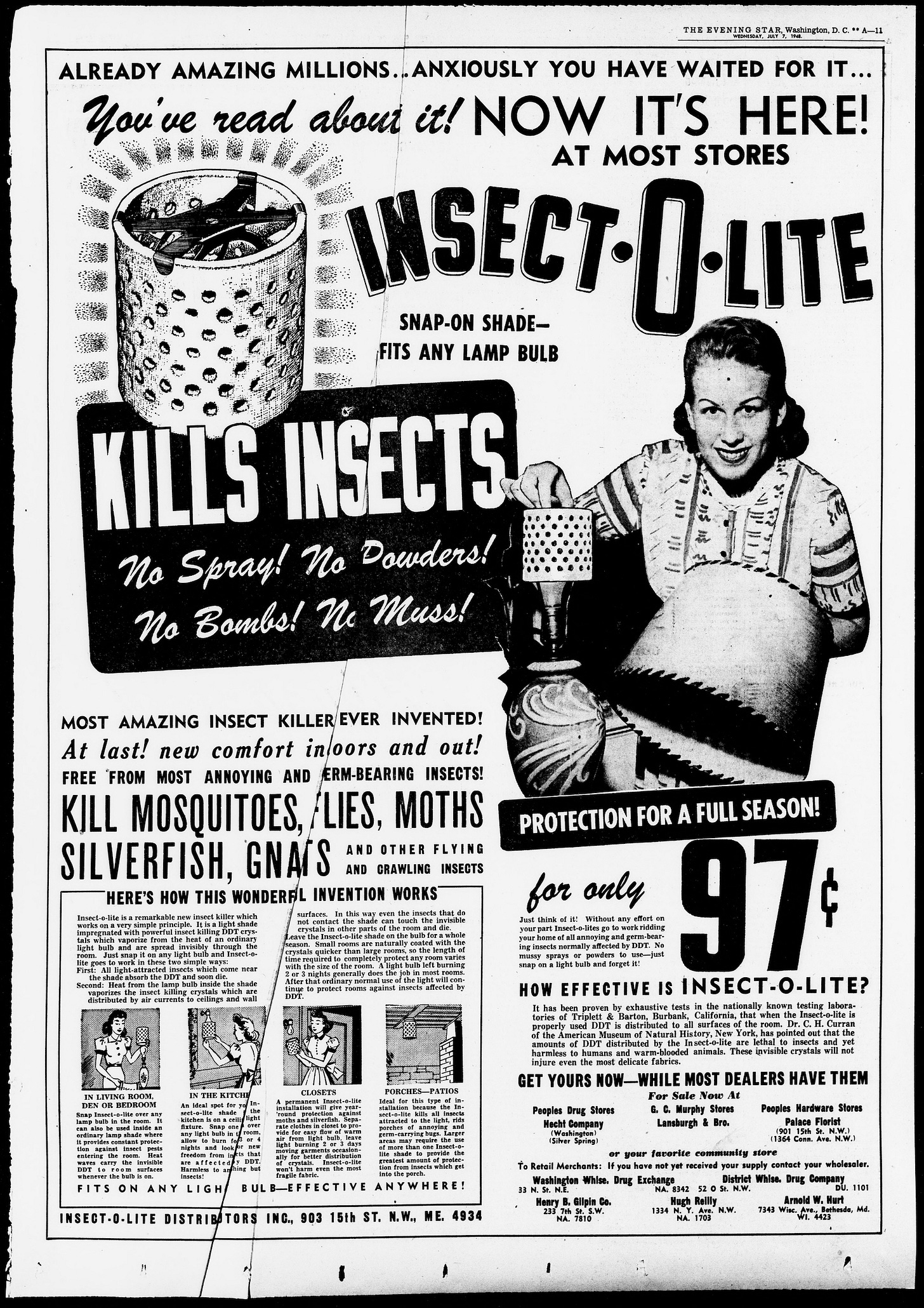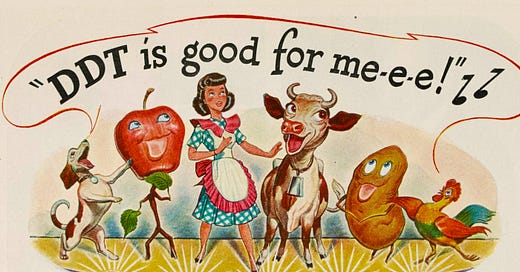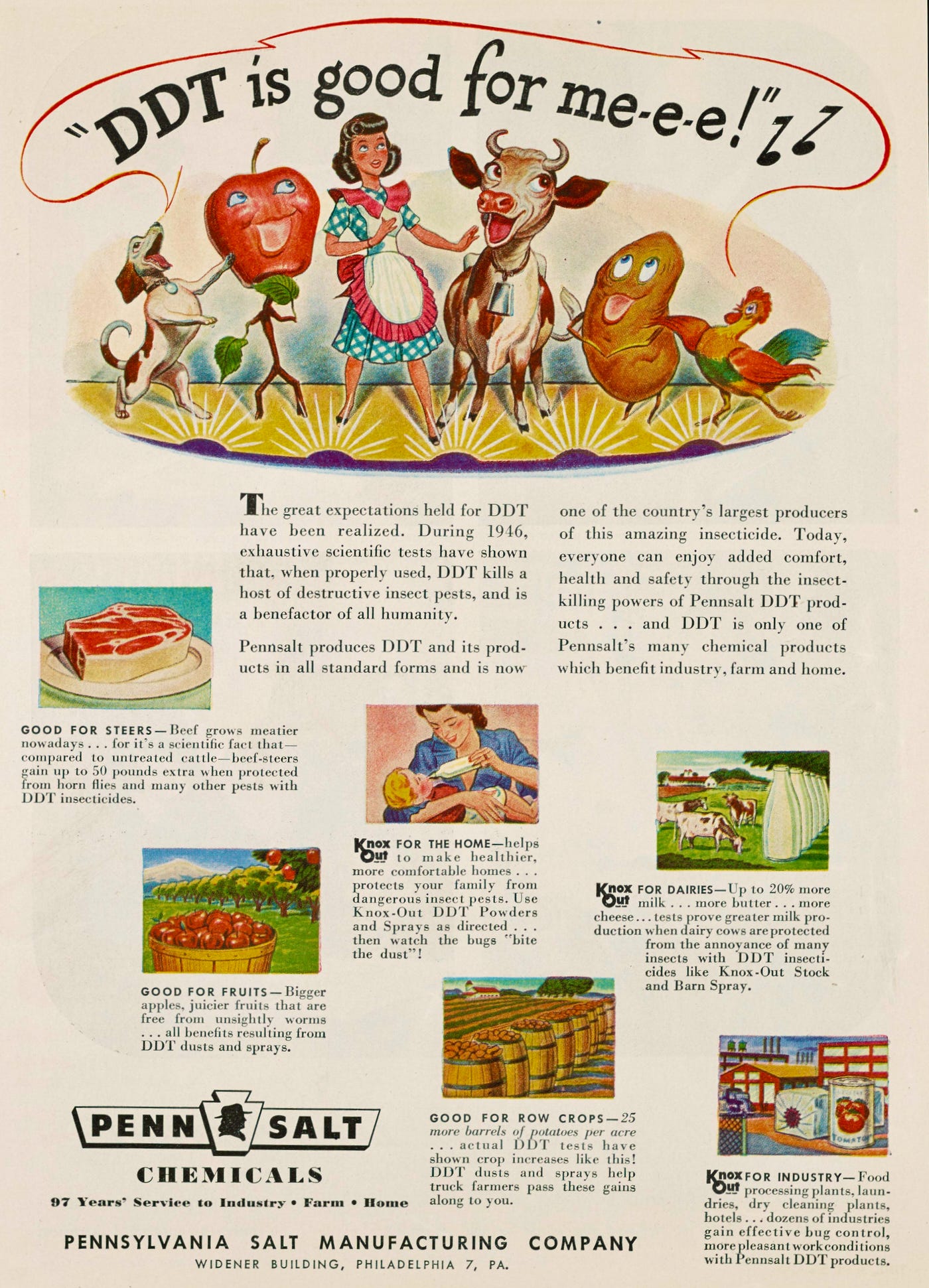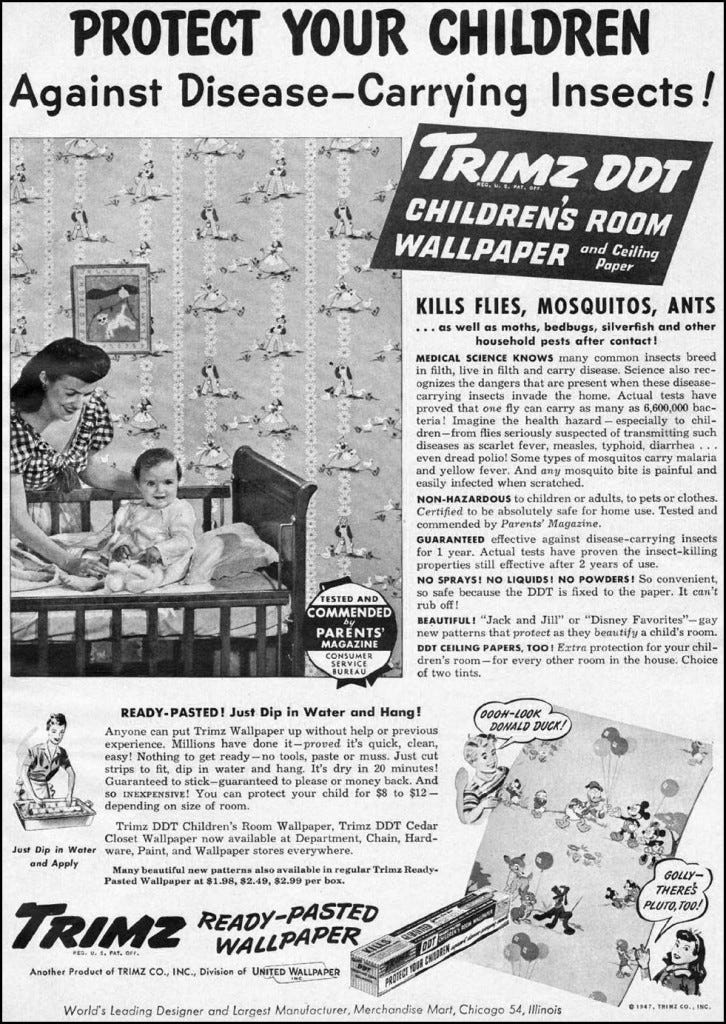DDT is good for me-e-e! That was the slogan of a advertisement for a pesticide that was hailed as a miracle of modern science. This ad appeared in Time Magazine, June 30, 1947.
DDT was marketed as a wonder product for farmers, gardeners, and homeowners. DDT could kill pests such as mosquitoes, flies, ants, aphids, and caterpillars with ease. It could also protect crops, livestock, and furniture from damage.
Makers claimed that it was harmless to humans and animals, and that it could even be used to spray on children’s hair to prevent lice. DDT was cheap, effective, and easy to use. What could possibly go wrong?
Why not get some DDT wall paper for the kids room?
READY PASTED! - just dip in water and hang!
Or how about a DDT impregnated lamp shade that uses the heat of the bulb to “invisibly spread DDT around the room.”

Well, a lot, as it turned out. DDT was not as harmless as it seemed. It was found to be very persistent in the environment, accumulating in the soil, water, and food chain. It also had adverse effects on wildlife, especially birds. DDT interfered with the calcium metabolism of birds, causing their eggshells to thin and break. This led to the decline of many bird species, such as the bald eagle, the peregrine falcon, and the brown pelican. DDT also posed a potential threat to human health.
It was classified as a probable human carcinogen by the U.S. Environmental Protection Agency (EPA) and other authorities. It was also linked to reproductive problems, neurological disorders, and immune system damage.
DDT was banned in the United States in 1972, following the publication of Rachel Carson’s book Silent Spring in 1962. Silent Spring exposed the dangers of DDT and other pesticides to the environment and human health. It also sparked a public outcry and a movement for environmental protection.
Today, DDT is still used in some countries for malaria control, but under strict regulations and with alternatives being sought. DDT is no longer good for me-e-e, or for anyone else.
Let’s have more fun with chemicals!
Want another “don’t worry - chemicals are safe” ad?
From Plastic Wonderland to Wasteland (1940)
When Fortune Magazine published this map in 1940, the possibility of a plastic future was largely an industrial fantasy. During WWII, the US scrambled to find substitutes for strategically important raw materials that they could no longer obtain due to the war.
Title: DDT is good for me-e-e!
Creator: Pennsalt Chemicals Corporation
Date: June 30, 1947
Publication: Time Magazine
Archive: Science History Institute








Those old ads are worth the price of admission!
The worst thing about DDT poisoning is the memory loss. Worse yet, the memory loss